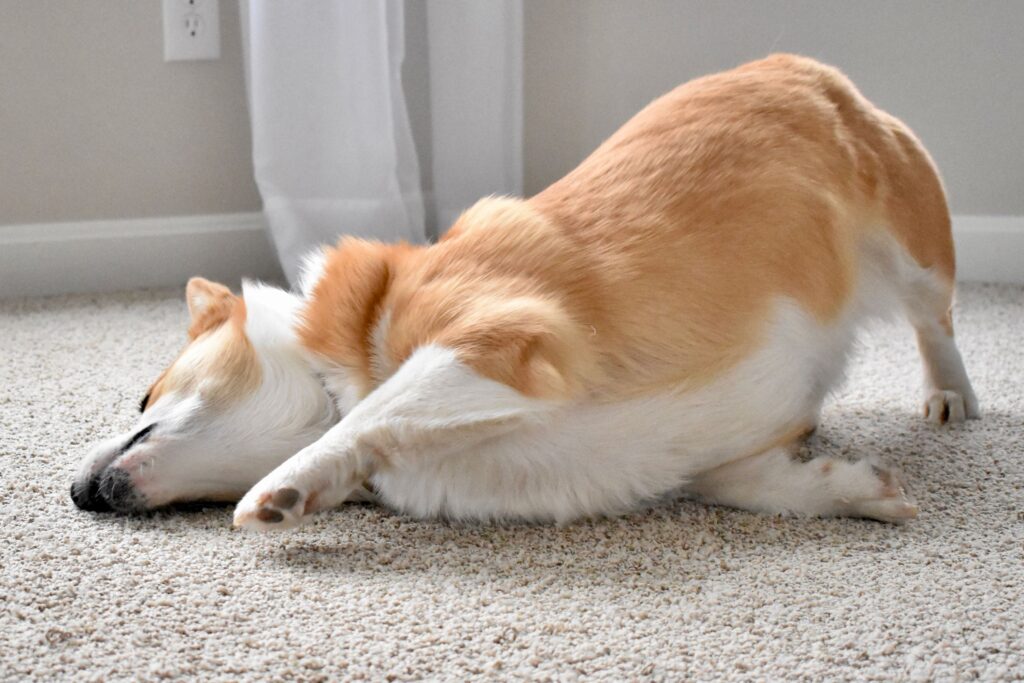Cat grabbing your leg when you walk is their way of seeking attention and engaging with you. This behavior is common among cats and is an indication of their natural instincts and desire for interaction.
When walking, your cat may see your leg as a moving target and respond by trying to play or simply get your attention. It’s important to provide your cat with alternative means of play and exercise to redirect their energy and prevent unwanted behavior.
Understanding your cat’s needs and providing appropriate outlets for their instincts can help promote a healthier and more harmonious relationship between you and your feline friend.
Contents
- 1 The Instinctual Nature Of Cats’ Leg-grabbing Behavior
- 2 Establishing Territory And Marking
- 3 Seeking Attention And Interaction
- 4 Training Methods And Behavior Modification
- 5 Potential Underlying Medical Issues
- 6 Encouraging Healthy Boundaries With Your Cat
- 7 Frequently Asked Questions On I’m Curious: Why Does My Cat Grab My Leg When I Walk?
- 8 Conclusion
The Instinctual Nature Of Cats’ Leg-grabbing Behavior
The instinctual nature of cats leads to their leg-grabbing behavior. Cats have a natural prey drive, and this behavior can be traced back to their ancestral instincts. When cats grab your leg when you walk, it is their way of investigating and playing. They may use their paws to explore their surroundings, and your leg becomes an interesting object for them to interact with.
Cats are also known for their curiosity, and grabbing your leg can be a manifestation of this trait. They may be attracted to the movement and want to engage in interactive play. It’s essential to understand that cats use their paws as tools, and grabbing your leg may not necessarily be a sign of aggression.
Providing appropriate outlets for your cat’s natural instincts can help redirect their leg-grabbing behavior. Interactive toys and play sessions can help satisfy their prey drive and provide mental stimulation. Additionally, ensuring your cat has enough physical activity and environmental enrichment can prevent boredom and unwanted behaviors. Overall, understanding and appreciating the instinctual nature of cats can help foster a harmonious relationship between you and your feline companion.
Establishing Territory And Marking
One possible reason why cats may grab your leg when you walk is because they are establishing territory and marking. By using their claws to grip onto your leg, they are leaving their scent and claiming you as part of their space. Cats have scent glands located in their paws, so when they scratch or grab onto something, they are leaving behind their unique scent. This behavior is a way for them to assert ownership over their environment.
Cats are known to be territorial animals, and they have a strong need to mark their surroundings as a way to communicate their presence and boundaries. By leaving their scent on various objects, including your leg, they are essentially telling other cats that this territory belongs to them. So the next time your cat grabs your leg, it may be their way of saying, “This human belongs to me!”
Seeking Attention And Interaction
When your cat grabs your leg while you walk, it is often a way of seeking attention and interaction. Cats may use leg-grabbing as a means to initiate play or to get your attention. It is their way of saying, “hey, I want to engage with you!” However, it is essential to recognize the difference between playful grabbing and aggression. Playful grabbing is usually accompanied by a relaxed body posture, soft paw pads, and gentle bites or nibbles. Aggressive behavior, on the other hand, involves a tense body, extended claws, and forceful bites. As a cat owner, it is crucial to read your cat’s body language and understand their intentions. By responding appropriately to their leg-grabbing behavior, you can foster a positive and interactive bond with your feline friend.
Training Methods And Behavior Modification
I’m sure many cat owners have experienced their feline friend grabbing their leg while walking. This behavior can be quite surprising and sometimes even painful. It’s important to understand why your cat is behaving this way in order to address the issue and prevent any unwanted incidents.
One effective method for redirecting your cat’s behavior is through positive reinforcement techniques. By rewarding your cat for engaging in more appropriate behaviors, such as using a scratching post or playing with a designated toy, you can help them understand what behaviors are acceptable.
Another useful approach is to provide your cat with plenty of mental and physical stimulation. Cats have natural hunting instincts, so engaging them in interactive play sessions can help redirect their energy and prevent them from resorting to leg-grabbing as a form of entertainment.
It’s important to remember that every cat is unique, and what works for one may not work for another. Patience and consistency are key when it comes to modifying your cat’s behavior. By using positive reinforcement techniques and providing appropriate outlets for their instinctual behaviors, you can help your cat break the habit of leg-grabbing and create a more harmonious living environment.
Potential Underlying Medical Issues
It’s not uncommon for cats to grab their owner’s leg when they walk. This behavior can be seen as a playful or attention-seeking gesture. However, in some cases, it may also be a sign of an underlying medical issue. It’s important to differentiate normal cat behavior from potential medical concerns.
Separating normal cat behavior from potential medical concerns:
If your cat’s leg-grabbing behavior becomes excessive or aggressive, it could be a sign of an underlying problem. Excessive scratching, vocalization, or aggression during the leg-grabbing can indicate pain or discomfort. In such cases, it’s advisable to seek veterinary advice to rule out any medical issues.

Credit: www.newyorker.com
Encouraging Healthy Boundaries With Your Cat
Establishing healthy boundaries with your cat is essential for maintaining a harmonious relationship. One common behavior that may indicate a need to set boundaries is when your cat grabs your leg while you walk. This behavior can be attributed to a variety of reasons, such as seeking attention, playfulness, or even a form of communication.
Instead of allowing your cat to grab your leg, it is important to promote alternative outlets for play and stimulation. Providing interactive toys, such as puzzle feeders or laser pointers, can help redirect your cat’s energy and engage their natural hunting instincts. Spending quality time engaging in interactive play sessions can also help to establish a healthy play routine.
Consistency in your interactions with your cat is key to setting boundaries. Avoid reinforcing the behavior by not responding to the leg-grabbing. Instead, redirect their attention to appropriate play objects and reward them for engaging with those instead. With patience and consistent reinforcement, you can encourage your cat to develop healthier play behaviors and promote a more harmonious relationship.
Frequently Asked Questions On I’m Curious: Why Does My Cat Grab My Leg When I Walk?
Why Does My Cat Claw My Leg When I Walk By?
Your cat may claw your leg when you walk by to get your attention or play.
Why Does My Cat Jump And Grab My Leg?
Your cat jumps and grabs your leg as a form of play or to get your attention. It’s their way of seeking interaction and expressing their natural hunting instincts.
Why Is My Cat Clinging To My Leg?
Your cat clings to your leg because it seeks comfort and security. It may want attention, affection, or reassurance. This behavior is often a sign of trust and affection towards you.
Why Does My Cat Scratch Me When I Walk Past Him?
Cats may scratch you when you walk past because they’re trying to defend their territory or play. It’s natural behavior for cats.
Conclusion
When your cat grabs your leg while you walk, it’s most likely a combination of playfulness, territory marking, or seeking attention. Understanding these reasons can help you better respond to your furry companion’s behavior. Remember to provide alternative ways for them to expend energy and interact, such as engaging toys and regular play sessions.
By creating a stimulating environment, you can minimize leg-grabbing instances and foster a strong bond with your beloved feline friend.
Katie Lindsey is a passionate cat lover and founder of Cats Solution, a comprehensive resource for all things feline. With a lifelong love for cats and extensive knowledge in their care and behavior, she provides expert advice and solutions to cat owners. Through her website, Katie fosters a supportive community where cat enthusiasts can find guidance and heartwarming stories. A dedicated advocate for animal welfare, Katie also promotes responsible pet ownership and adoption. Join her on this purr-fect journey celebrating the joy of feline companionship.



